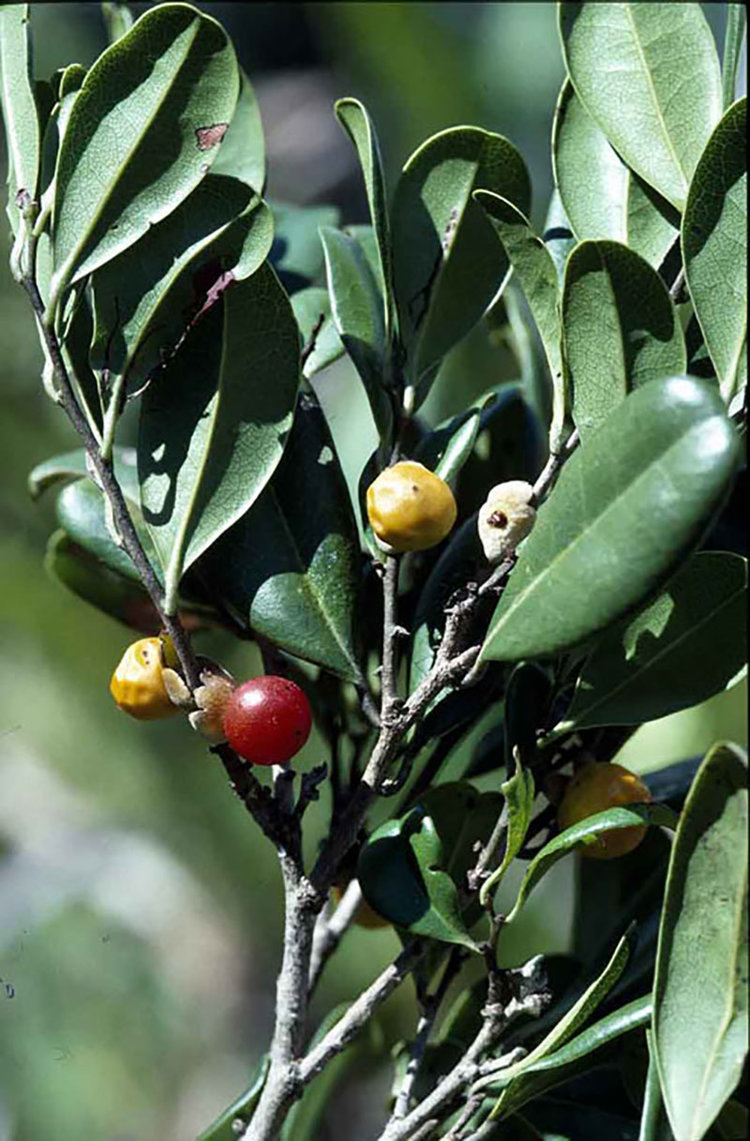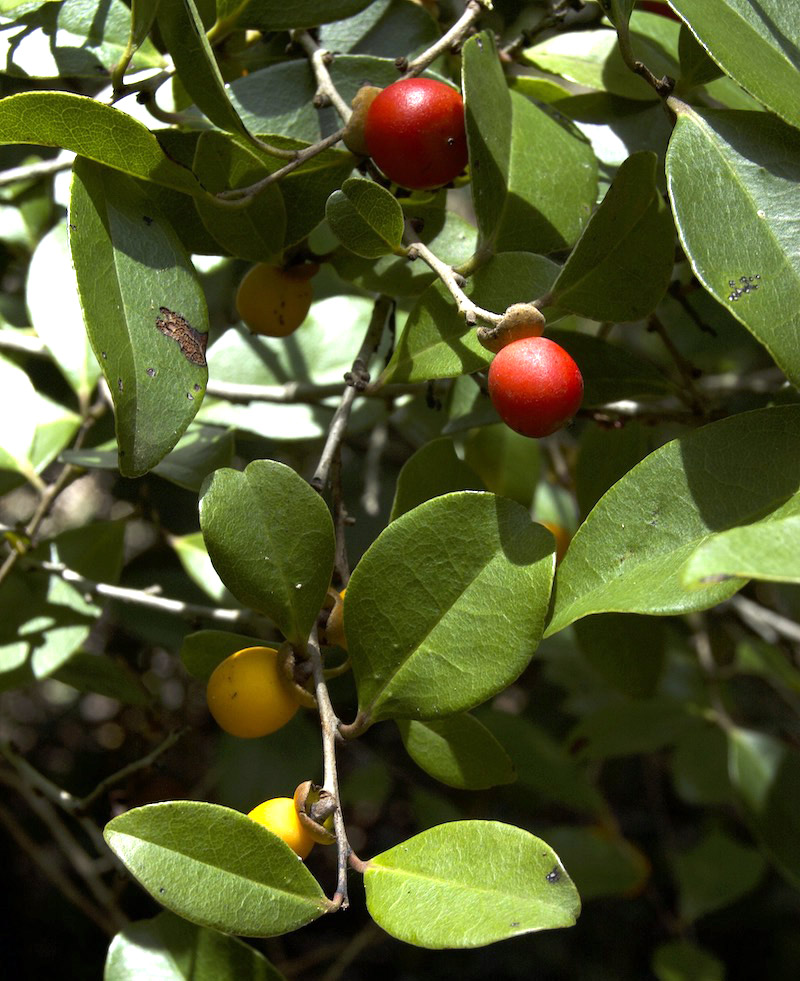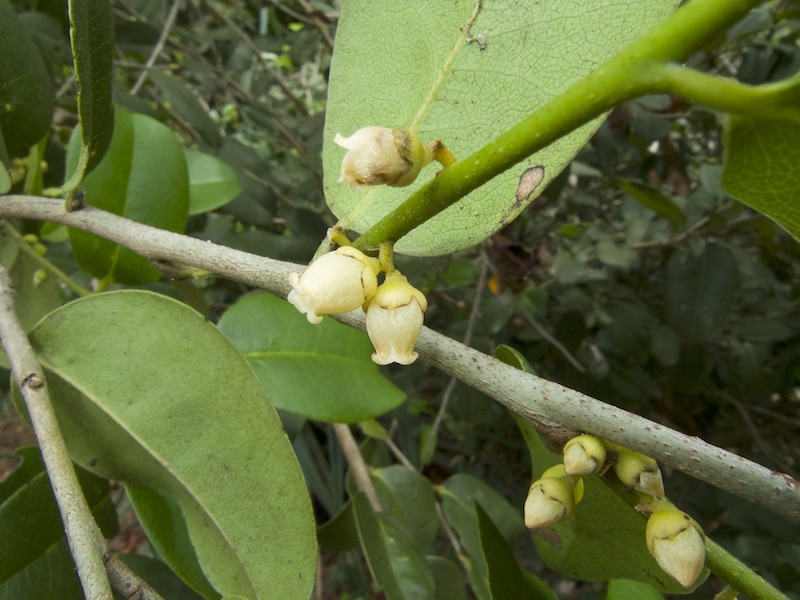Fruits/Seeds
Produces berries that become red when ripe. Fruiting occurs twice a year January – May and October - December.
Field Guide
Improve your identification skills. Download your Australian Ebony field guide here!

The Greek "dios" means divine or god-like, and "pyros" means wheat, a reference to the fruit of the gods, as some of the members of the genus have tasty fruit.
A small shrub-like tree with a height of 11 m.
It also flowers and fruits as a shrub. Very dark, mottled grey to black bark on the trunk/body of the tree.
Thick leathery leaves 7 - 9 cm long.
Produces berries that become red when ripe. Fruiting occurs twice a year January – May and October - December.
Improve your identification skills. Download your Australian Ebony field guide here!

Healthy or unhealthy trees
Presence of berries (ripe or unripe)
We expect to see signs of stress and dieback in relation to climate change warming and drying their environments. The timing and patterns of fruiting are also likely to change.


Black Ebony (Diospyros humilis) is similar in appearance, however can be distinguished by its smaller and more bladed leaves. Dead bark is often quite dark, almost black and layered with brown brittle stripes in the blaze.